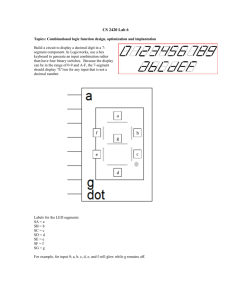

This type of cascaded full adder circuit is called as Ripple Carry Adder circuit. We can cascade single bit full adder circuits and could add two multiple bit binary numbers. Here is the advantage of full adder circuit. But what if we want to add two more than one bit numbers? Now, for the Carry out, it is A AND B OR Carry in (A XOR B), which is further represented by A.B + (A ⊕ B).Īs of now, we described the construction of single bit adder circuit with logic gates. We can also express it with (A ⊕ B) ⊕ Carry in. We can also express the full adder circuit construction in Boolean expression.įor the case of SUM, We first XOR the A and B input then we again XOR the output with Carry in. You can learn more about Logic gates here.Īs Full adder circuit deal with three inputs, the Truth table also updated with three input columns and two output columns. Here an extra gate is added in the circuitry, OR gate. In previous half-adder tutorial, we had seen the truth table of two logic gates which has two input options, XOR and AND gates. In the above image, instead of block diagram, actual symbols are shown. If we see the actual circuit inside the full adder, we will see two Half adders using XOR gate and AND gate with an additional OR gate. The Final Carry out represents the most significant bit or MSB. After logic OR of two Carry output, we get the final carry out of full adder circuit. On the other hand the Carry out of First half adder circuit and the Carry out of second adder circuit is further provided into OR logic gate. This SUM output is the final output of the Full adder circuit. Again it will provide SUM out and Carry out bit.

We provided the carry in bit across the other input of second half order circuit. First half adder circuit’s SUM output is further provided to the second half adder circuit’s input.

As seen in the previous half adder tutorial, it will produce two outputs, SUM and Carry out. The first half adder circuit is on the left side, we give two single bit binary inputs A and B. We add two half adder circuits with an extra addition of OR gate and get a complete full adder circuit.įull adder circuit construction is shown in the above block diagram, where two half adder circuits added together with a OR gate. So, A + B + CARRY IN = SUM and CARRY OUT.Īs per mathematics, if we add two half numbers we would get full number, same thing is happening here in full adder circuit construction. So, in the case of Full Adder Circuit we have three inputs A, B and Carry In and we will get final output SUM and Carry out. In case full adder construction, we can actually make a carry in input in the circuitry and could add it with other two inputs A and B. So we know that Half-adder circuit has a major drawback that we do not have the scope to provide ‘Carry in’ bit for addition.


 0 kommentar(er)
0 kommentar(er)
